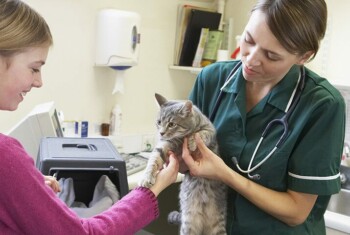Salivary mucocele: Causes, diagnosis and treatment.
Dogs have many salivary glands located both within the lining of the mouth and in the head and neck region. The most important salivary glands include the zygomatic (located by the eye), mandibular (located just behind the jaw bone), sublingual (located under the tongue), and parotid salivary glands (located around the ear canal).
Causes of salivary mucocele.
The inciting cause of a salivary mucocele is usually not definitively identified; however, trauma from a choke chain, bites to the neck, and sudden hyperextension of the neck are suspected causes. These can cause stretching or tearing of the salivary gland or the duct that drains saliva from the gland to the mouth. Saliva accumulates under the skin and incites a marked inflammatory response. The body attempts to contain the leaking saliva by creating a layer of connective tissue around the saliva called a mucocele.

Signs and diagnosis.
Mucoceles are primarily found in dogs and only rarely in cats. Mucoceles are more commonly seen in dachshunds, German shepherds, poodles and silky terriers. They may occur at any age.
The clinical signs associated with a mucocele are dependent on the gland that is affected:
- Cervical mucocele is caused by damage to the mandibular or sublingual salivary glands or their associated ducts. A swelling located on the side or under the neck is most commonly seen.
- Pharyngeal mucocele typically does not have an external visible swelling as the accumulation is located in the back of throat and will cause breathing difficulty. This is caused by damage to the mandibular or submandibular salivary glands or their associated ducts. Anesthesia is needed to allow examination of the throat to make a diagnosis.
- Sublingual mucocele is also called a ranula and is a swelling under the tongue. This type of mucocele is caused by damage to the sublingual ducts or the sublingual salivary gland.
- Zygomatic mucocele is due to damage to the zygomatic gland and causes swelling below the eye.

Other causes of swelling in the neck may include inflammation of the salivary gland, salivary gland tumors, infection with an abscess in the neck due to a foreign body, enlarged lymph nodes, and embryonic cysts such as a thyroglossal cyst, cystic Ratheke’s pouch, or a branchial cyst.
Prior to surgery, a fine needle aspirate of the swelling and examination of the fluid under a microscope should be performed. In addition, blood work such as a complete blood count and chemistry profile are routinely performed to evaluate internal organ health status in preparation for anesthesia and surgery.
Treatments.
Conservative treatment consisting of a wait-and-see approach or draining the fluid from the cyst rarely results in resolution of the problem.
Surgical removal of the involved salivary glands is the treatment of choice for a permanent cure of the problem. Although many important vessels and nerves that control tongue movement and swallowing are nestled around the gland, damage to these is very uncommon in the hands of an experienced surgeon.
At the decision of the surgeon, a drain may be placed after the glands have been removed. Removal of a set of salivary glands will not impair the ability to produce adequate saliva, as other glands will take over the function. Almost all patients are cured of salivary mucocele with just one surgery.


